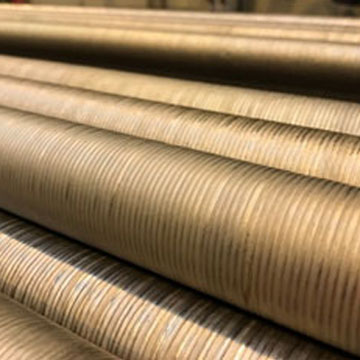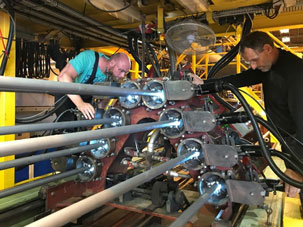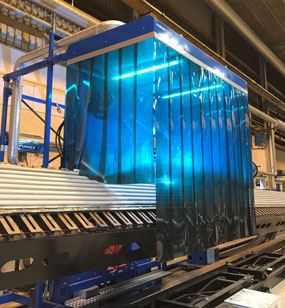Corrosion Protection with Inconel® Cladding
Combustion of municipal waste results in an environment within the boiler that is extremely corrosive. Corrosion in waste-fired boilers is primarily caused by chloride compounds which deposit on the furnace and convection pass tubes in combination with high temperatures. Proper protection from corrosion in these areas is paramount to plant availability and the successful long-term operation of these key boiler components.
A variety of solutions have been developed and used over the years to address lower furnace corrosion. One such solution is Inconel® weld overlay which was pioneered in waste-fired boilers and has gained general acceptance since the early 2000s on lower furnace walls of large mass-fired boilers.
The good corrosion resistance, high thermal conductivity, metallurgical bond to the base tube and membrane bar metals, and wear resistance have made Inconel overlay the primary approach for lower furnace corrosion protection in new designs.
B&W pioneered the use of Inconel as a solution to the lower furnace corrosion problem as well as other corrosion-susceptible areas. As early as 1986, the lower furnace tubes in a refuse-derived fuel-fired boiler in the U.S. was covered with Inconel weld overlay material. This overlay effectively minimized corrosion. Based on this experience, the industry followed B&W’s lead and Inconel weld overlay was subsequently field applied to the lower furnace of a number of operating boilers.
Spiral welding capability
As leaders in the use of this technology in waste-fired boiler applications, B&W is now applying Inconel cladding to other areas of the boiler that are susceptible to corrosion, including superheaters and evaporator tubes.
The spiral welding machine at our production facility in Esbjerg, Denmark, can apply Inconel cladding to a thickness of approximately 2 mm in a continuous welding process. Up to 8 tubes can be simultaneously processed at a length of up to 12 meters. During production, operators regularly check the Inconel layer thickness and monitor the welding technical parameters on each of the eight arcs. This ensures a smooth Inconel layer that meets specifications.
The Inconel coating allows conventional carbon steel boiler tubes to be used without affecting mechanical strength, while significantly extending the service life. It provides a high level of protection against the high temperatures and aggressive flue gases that are present in the highly corrosive environment of waste-to-energy furnaces and boilers. Inconel cladding also has an extremely high resistance to mechanical abrasion.
Other Inconel machining capabilities
In addition to spiral welding capability, a robotic welding machine is utilized to apply Inconel cladding to furnace wall panels.
Cold metal transfer (CMT) welding is used to apply Inconel cladding on panel walls. In this ‘cold welding’ process, a minimal amount of iron melts from the tubes into the Inconel cladding. Minimizing the iron content as much as possible within the Inconel cladding is integral to improving its durability.
Inconel replaces refractory lining for tube protection. It has a proven long life and is easy to visually identify when maintenance is necessary. With refractory, tube deterioration is often hidden, which may eventually lead to increased maintenance and repair costs.
Inconel is a trademark of Special Metals Corporation and its subsidiaries.

Inconel-cladded tubes

Spiral welding process

Robotic welding
Watch our spiral welding machine in action applying Inconel® coating at our production facility in Esbjerg, Denmark.